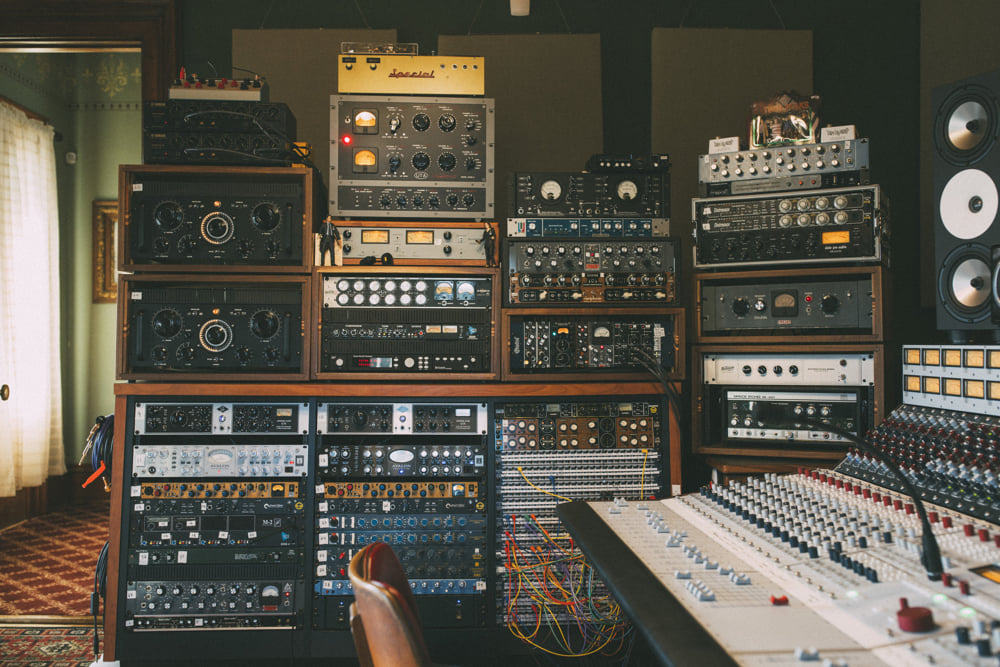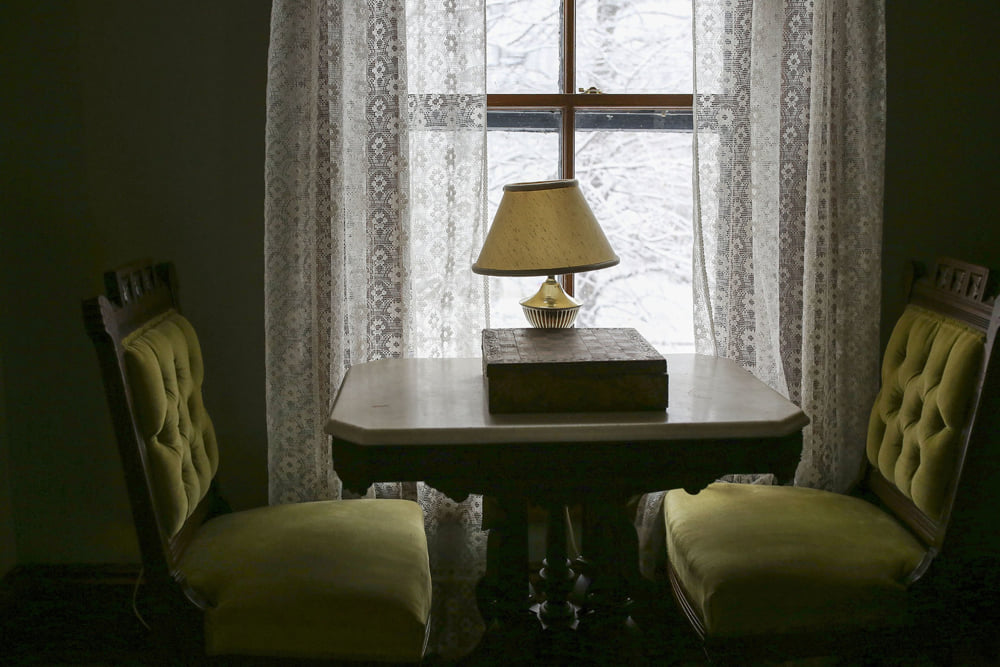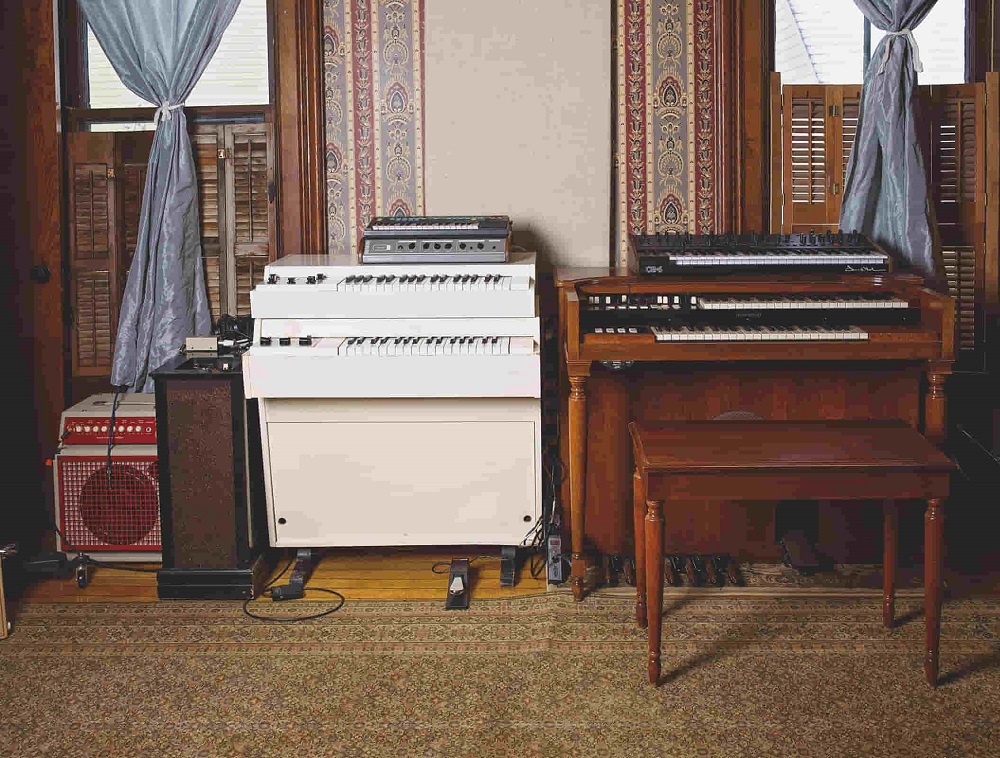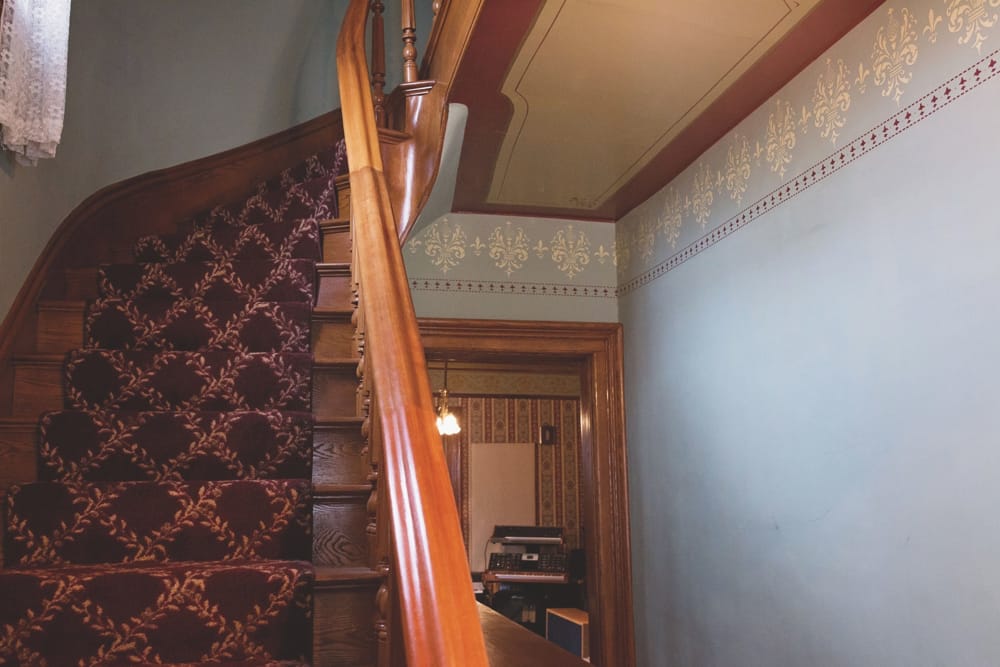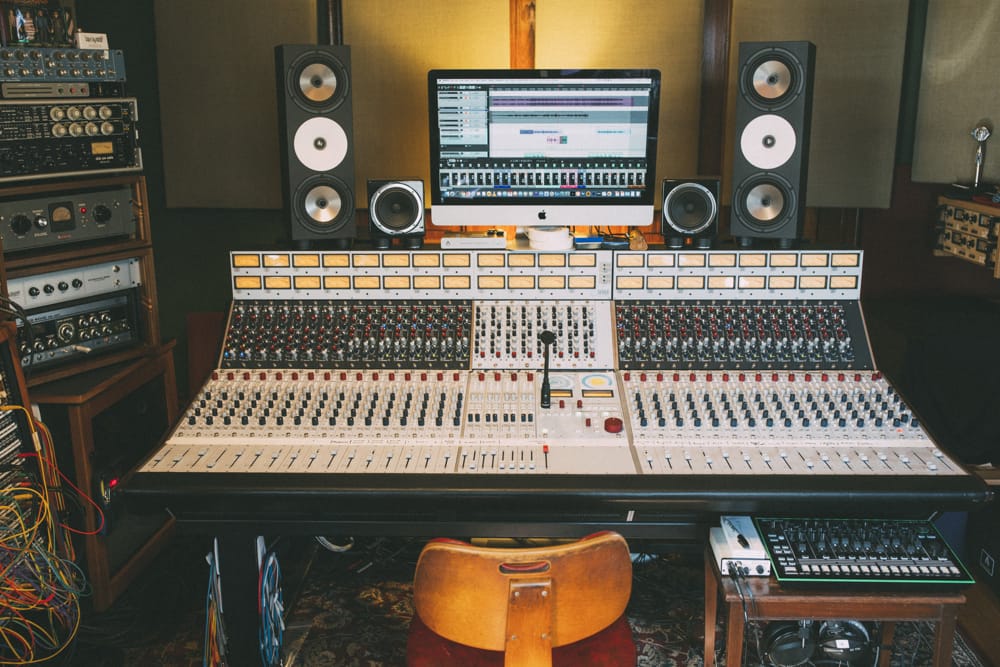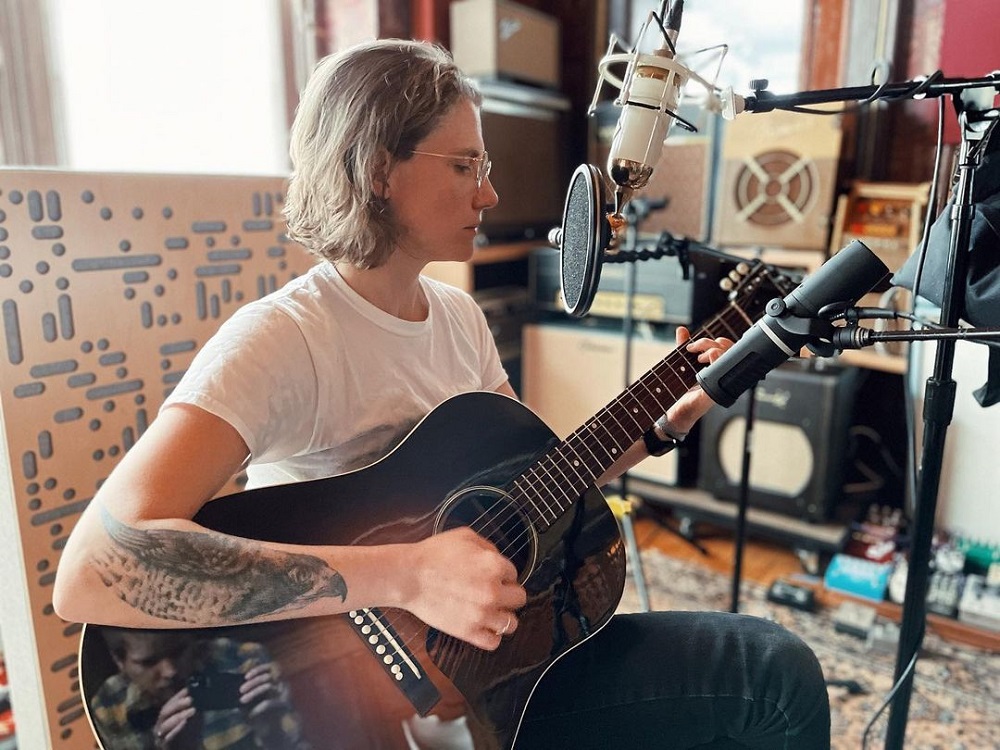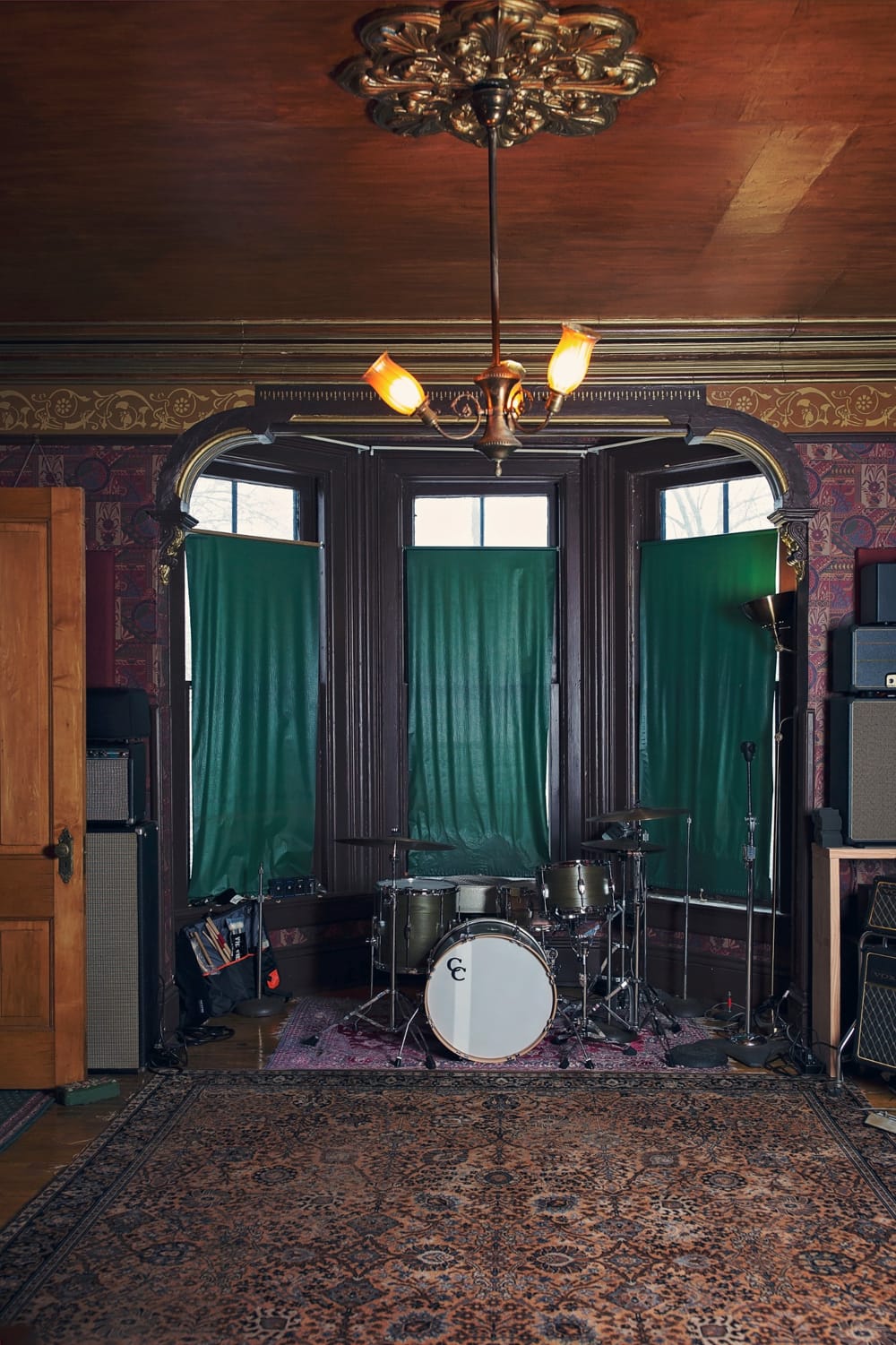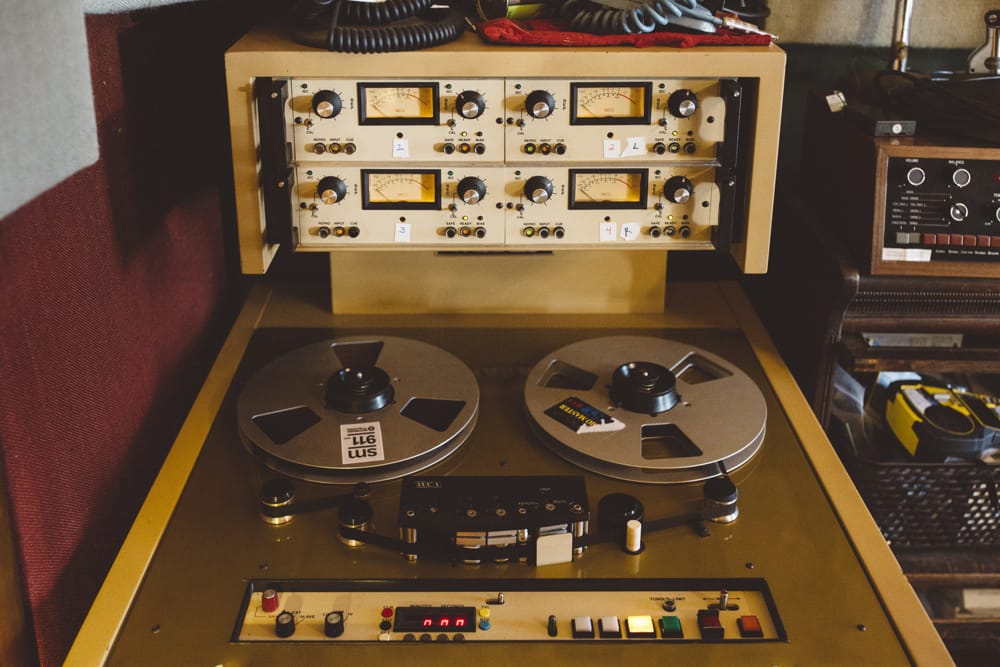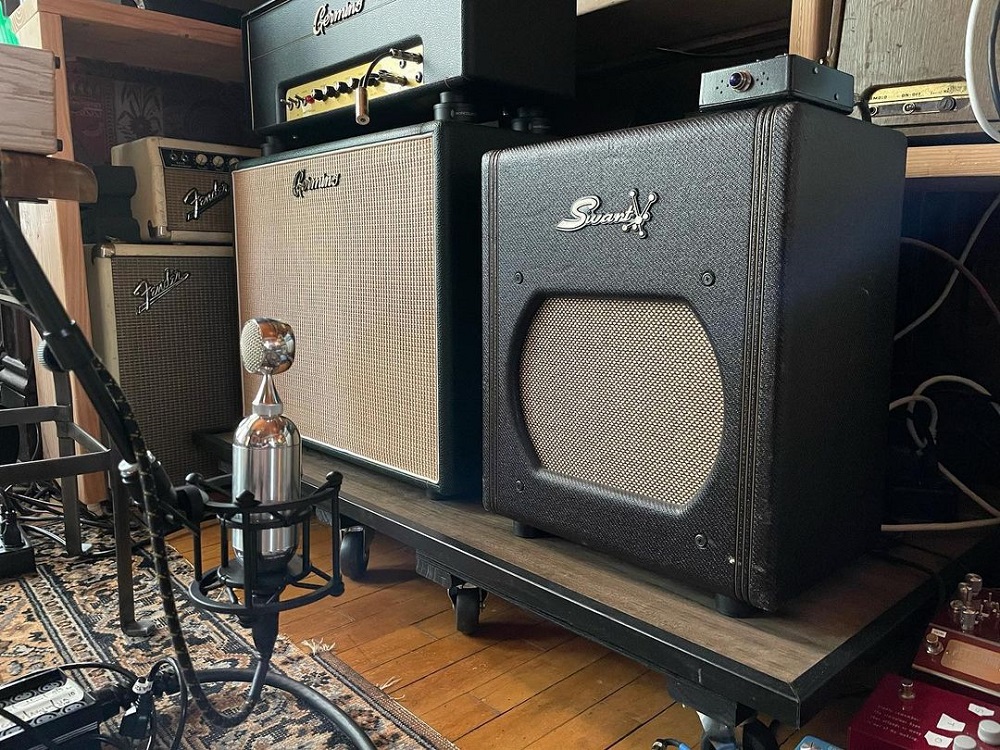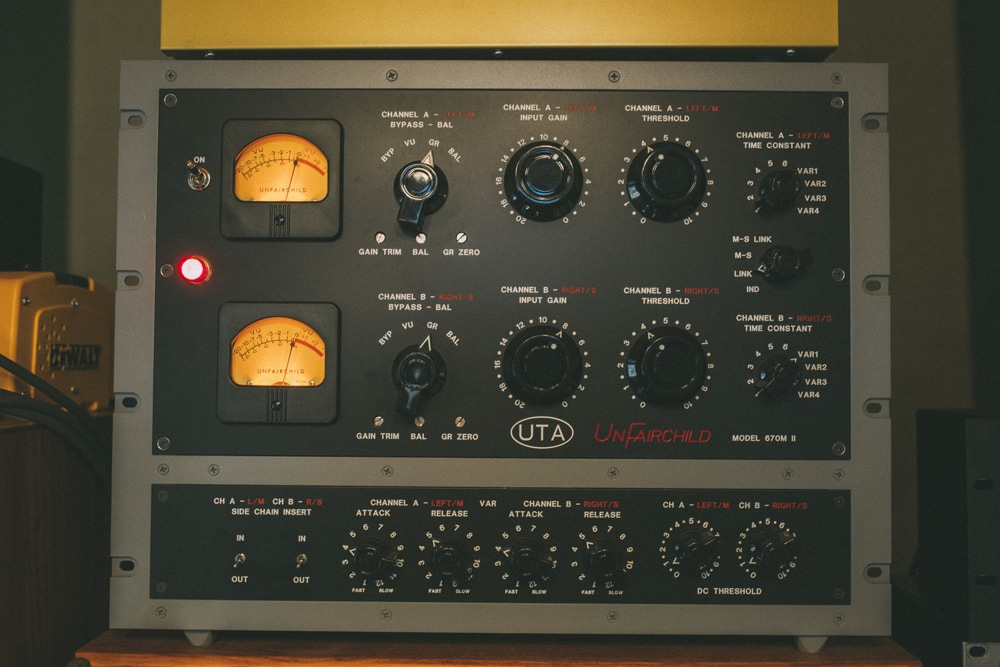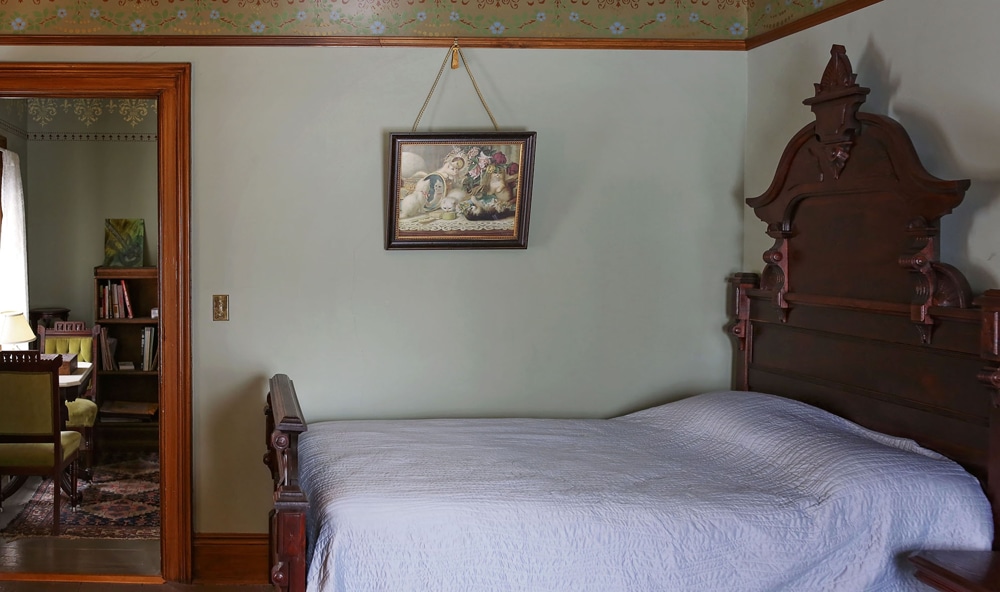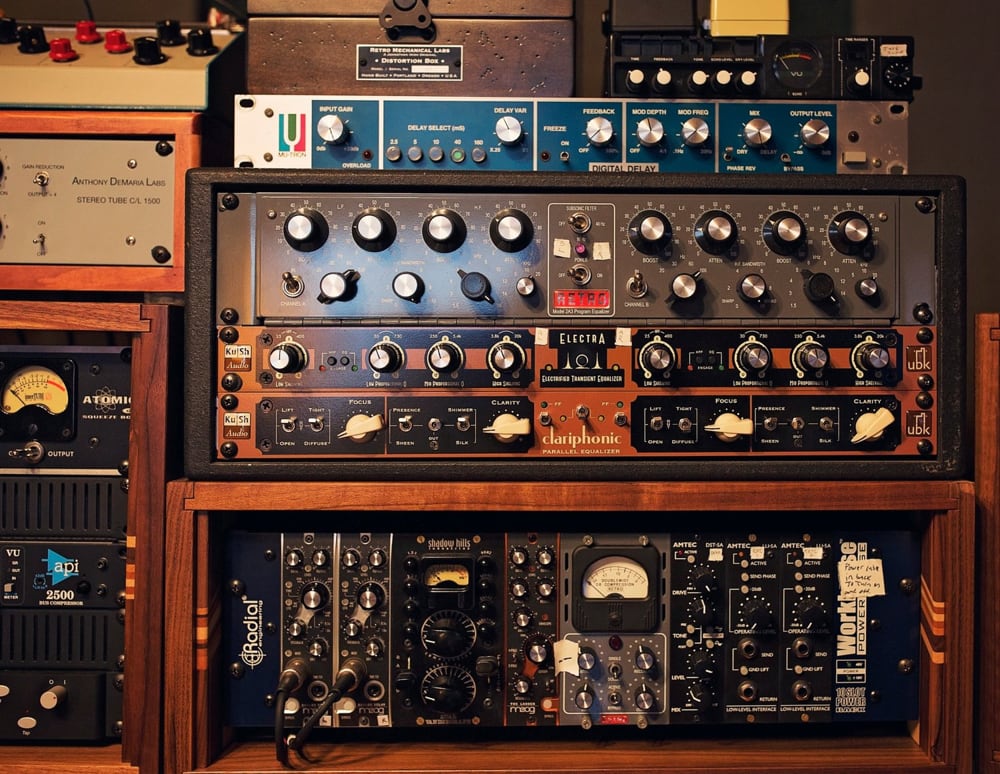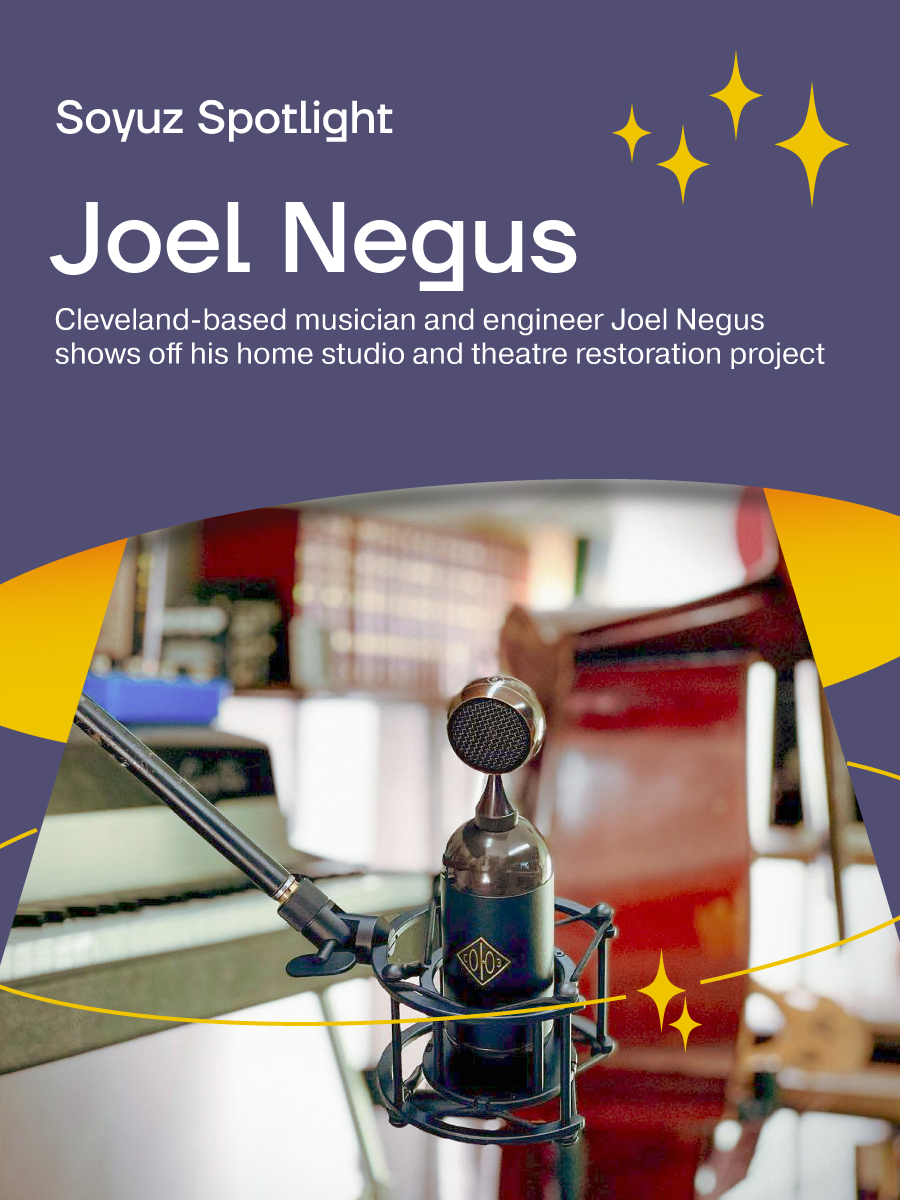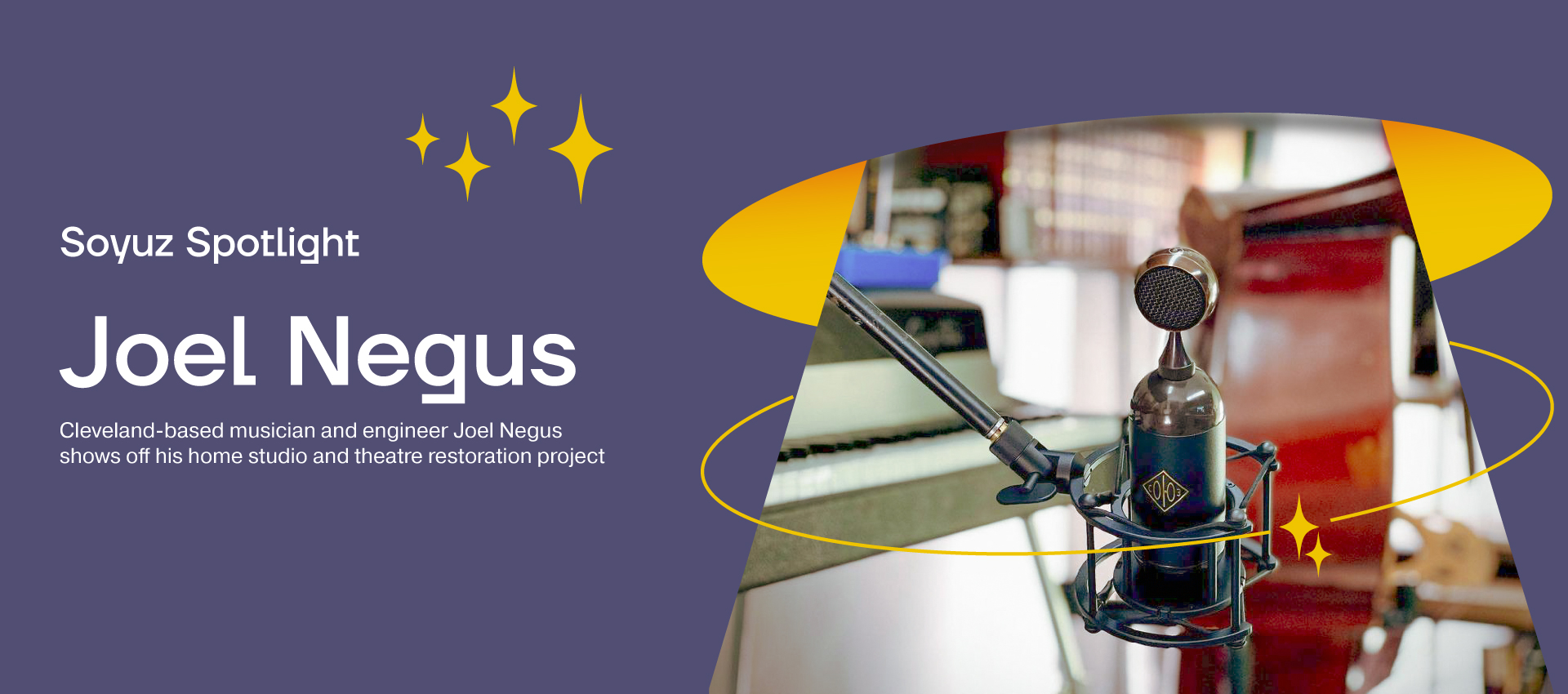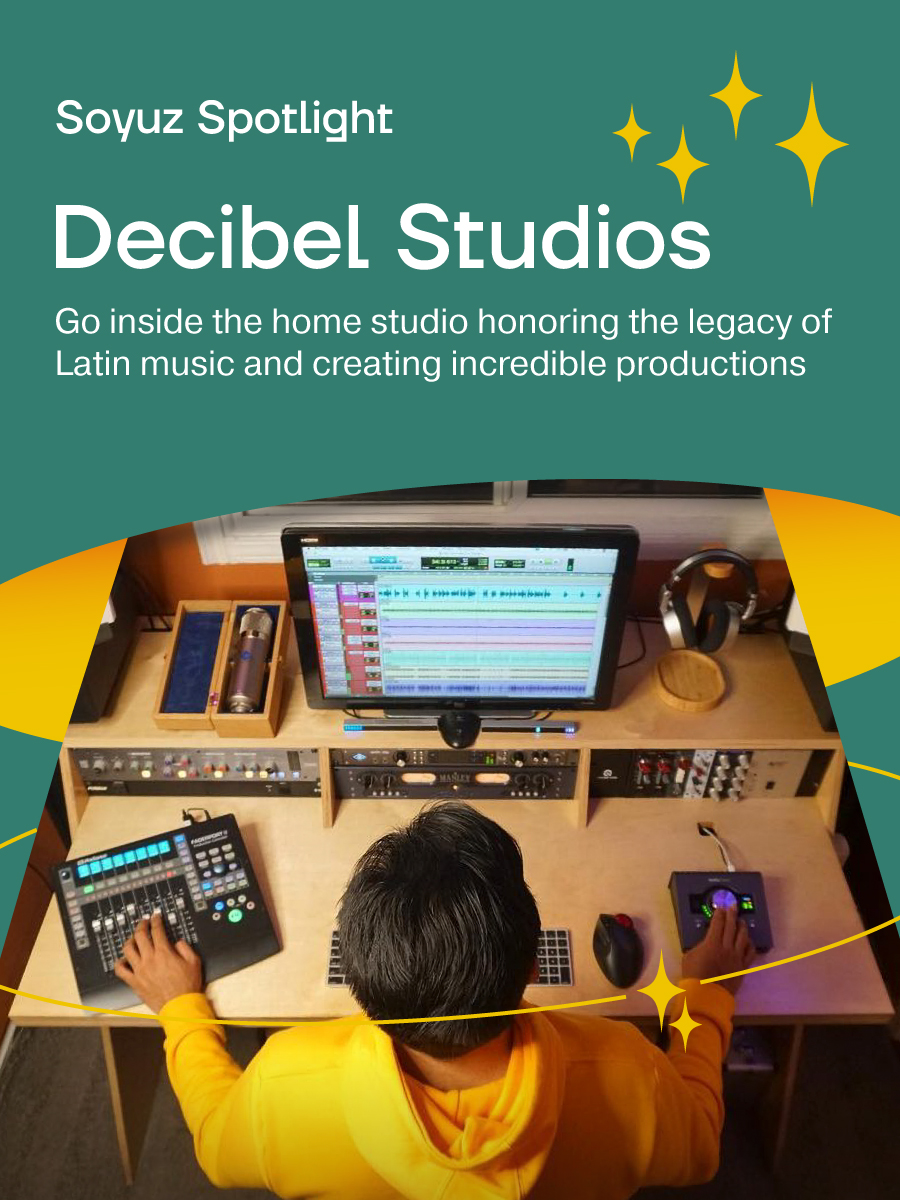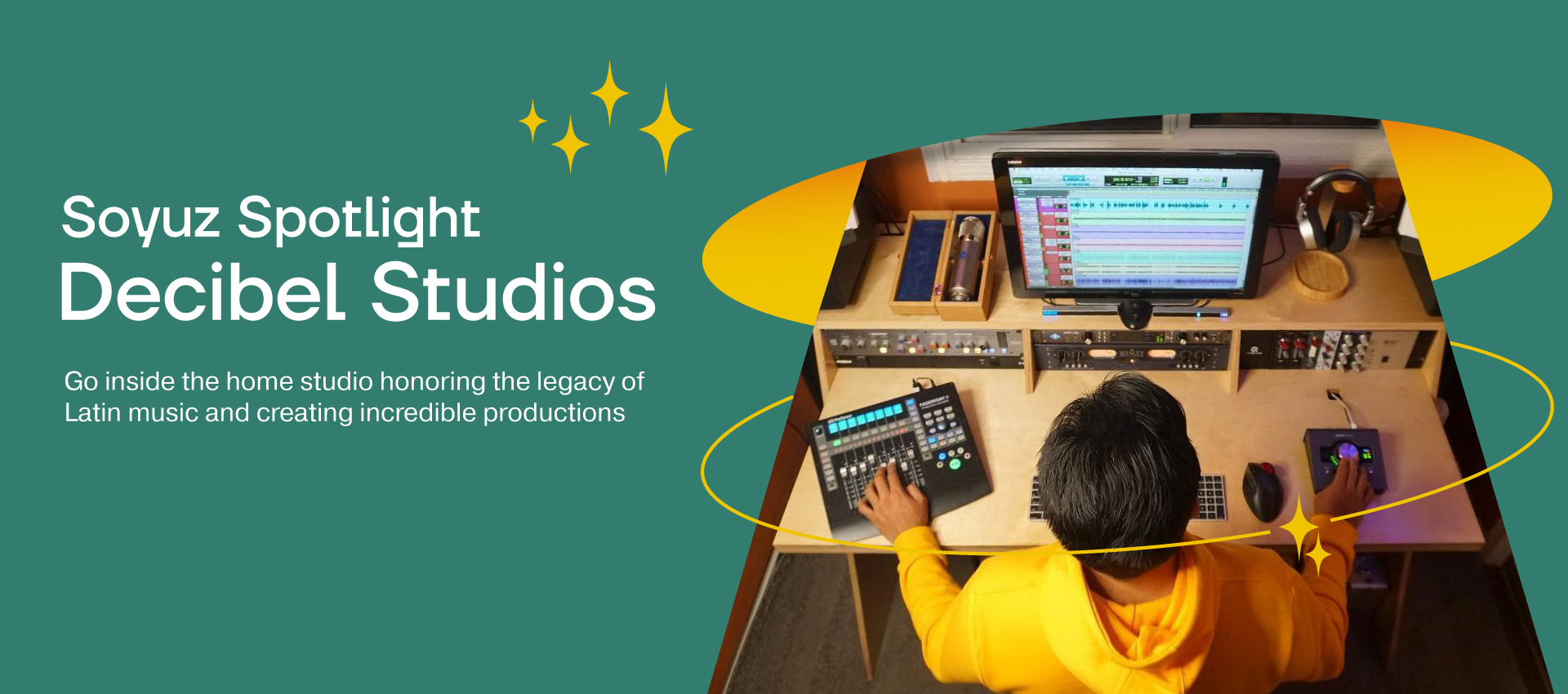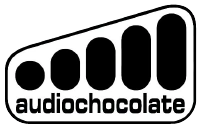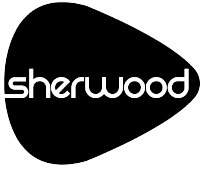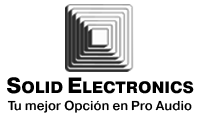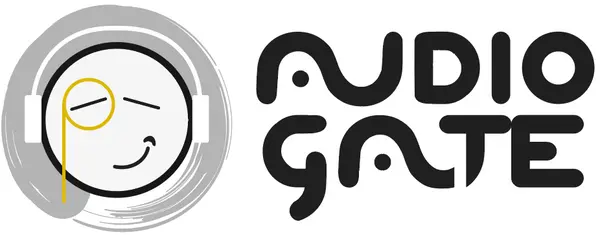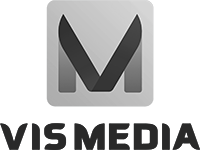Sometimes the studio can feel like a cold and clinical place. Yeah, you’re there to get something done, but shouldn’t the surroundings inspire your best work? The production team at Honeytone seems to think so.
Led by Patrick Boland, Marty Brueggemann and Jeff Patlingrao, the Honeytone recording studio and record label is located inside a classic Victorian mansion in Neenah, Wisconsin. The home dates back to the 1800s and has a warmth and feel that puts any engineer or artist at ease when they walk through the door.
“I had a dream of owning a studio space. I would hold recording sessions at my house and invite friends to stay at what became known as the Hewitt St. Sessions,” says Patrick. “Before finding the current studio location, I looked at an old church, a modern-day production studio that was for sale and a doctor’s office. None of them had the right combination of vibe and affordability I was looking for.”
We recently sat down with Patrick to talk about the work the trio has put in on the home, the gear they’ve filled it with and the resulting sounds that have stemmed from sessions there. Continue on below to learn more about Honeytone and find out how they are using Soyuz Microphones.
How did find the current residence you’re in? Any interesting history about the house or its location?
I was driving down the street and saw the owner taking down a “For Sale” sign. I pulled over and we started talking. I said it was too bad he was taking it off the market and he offered me a tour. As I walked through this beautiful victorian mansion, I could envision the control room as well as the live rooms, and there was plenty of space for bands to stay. It was a total destination spot. Over the next week, the owner and I struck up a deal and the property was mine. It was built in the late 1800s by a lumber baron. The previous owner spent the last 30 years restoring the house to its former glory. He put in a lot of work and I feel it’s my job as the current steward of the house to maintain its legacy.
What made the house the perfect choice to create a studio in? Gear aside, did you have to do a lot of work to build out the space?
I wanted a non-traditional space for the studio; a place where musicians could come and just focus on making music. It had to feel warm and inviting. There is a front and back staircase, so people can come and go, even while we are recording. The ceilings are tall and the rooms are spacious. There is even a little alcove in the live room that is perfect for drums.
At first, I built all my own sound panels with the help of a friend who had experience with carpentry. Later I worked with GIK Acoustics to come up with a custom plan for the control room and tweaking the live rooms. I used the existing picture rail to hang the sound panels. I try to use the spaces as organically as possible and embrace the spaces for what they are. We even put a mic at the top of the staircase to catch the unique echo up there.
Studios can often feel kind of cold and lifeless, but it feels like the mansion has warm vibes. How did you go about creating this inviting atmosphere?
I purchased the contents along with the home. My wife, Katie, helped me decide what to keep in the house and what to remove. As we added equipment and lighting, we tried to do so in a way that would maintain that warm inviting feeling. I’m constantly looking at every little aspect of how to make each room better. Jeff is a lot of help with that as well. We are often discussing little tweaks we can make to improve the spaces. I’m lucky to have a lot of help. My Uncle Rick even helps us build custom pieces for the studio. The latest thing he built was an amp cart/shelf on wheels. He also helped with the current version of sound panel installation. Zappa, the studio cat, also helps maintain a welcoming vibe.
Alright, let’s talk about gear. In general, are the three of you in agreement on the kind of gear and workflow you wanted to have for the studio? What informed the choices you made?
In general, we favor a hybrid analog/digital setup. In a broader sense, we are always looking for gear that excites us and opens up new tonal pallettes. We like classic gear, but also want to support modern builders who are breaking new ground.
Walk us through the basic setup of Honeytone.
For tracking sessions, we have two main live rooms, but use the whole house depending on the needs of the project. We have recorded singer-songwriters in the upstairs hallway landing that has beautiful curved walls. We have even recorded lead vocals in the downstairs bathtub, upon request. In general, we set up a band in the main live room with the drums. Electric guitars and bass amps will be a few rooms away in the kitchen or in the hallway outside the control room. The second live room that is attached to the main live room houses our keyboard and synth collection. We also typically record vocals in this room. We mix using our analog console and outboard gear along with plugins for the best of both worlds.
You can’t do much better than having a Rupert Neve Designs 5088 at the center of your studio. What made you decide on that console in particular and what’s the best part of working on it every day?
The 5088 was my dream console after watching many videos of it and listening to so many records I like that were mixed on one. It’s the perfect fit for our studio in terms of size, routing, headroom and overall musicality of the sound. The best part of working on it every day is that it’s never a limitation. It’s always enhancing the music. You never have to worry about headroom, you can always push things as far as you want to without the board crapping out.
As for microphones, you have a world-class selection from the best of the best. What do you look/listen for when considering a microphone for the studio?
I’m looking for reliability, a natural open sound that doesn’t need a lot of EQ and when adding a new mic, I’m looking for something that will fill a gap in our collection.
You guys were early adopters of Soyuz when you grabbed a 017 all the way back in 2016. What piqued your interest about that microphone and what keeps you going back to it?
I first saw a review by Nigel Godrich and the look of the mic caught my attention. I was looking for another tube mic at the time to supplement our Wunder CM7. I decided to give it a try and never looked back. We use it on every session and it’s become our go-to vocal mic.
To me, it’s got the low mid warmth and smooth top end of a tube mic, but also seems to be more articulate and have less proximity effect than a lot of tube mics I’ve used. It doesn’t come off as sounding too old school or too much high-end rolled-off. It’s also a great mic to have up during a fast-paced session, as it’s good on so many sources and stacks up well in a mix.
What about the 013s and the 023 Bomblet? Any favorite miking applications for those microphones?
The tube 013s are great for overheads when you are wanting to tame transients a bit and don’t need the fast attack of a FET mic. We also use them as rooms mics, on piano and acoustic guitar.
The Bomblets are fantastic mics. I used to use dynamic and condenser mics on electric guitar cabs. I find that I can get the best of both with the Bomblet. I can have it centered on the speaker cone about 6-8 inches off the cab and you get a great direct, but airy sound. It doesn’t have that treble spike some mics can get in front of the center of the speaker cone. We also use them on toms very often and have had great results using them as overhead mics in a Glyn Johns setup.
You also have a stunning collection of outboard gear, including EQs, compressors, delays and reverbs. If you had to choose only one, what’s the piece you go back to time and time again?
That’s a tough question to answer. For lead vocal compression, our go-to is our Electronaut M97s. For master buss compression, it’s our Undertone Audio UnFairchild. We recently got a Whitestone P331 and a Manley Massive Passive that have helped us elevate our mixes to another level. The Manley Massive Passive gets used during tracking and on the mix buss during mixing. The 5051, 5052 and 5033 modules in our 5088 are outstanding and integral to our workflow and sound. An inspiring reverb/delay that we keep coming back to is our Neon Egg Planetarium. The Bricasti M7 reverb has been on every mix since we got it years ago. It’s magical. I could go on about each piece of gear in the studio, as they were all carefully considered.
Honeytone has remained extremely productive throughout the pandemic. What are some tips for beating the slog that pandemic life can sometimes feel like? How are you keeping your minds fresh in the studio?
I think one way is to strive for connection. Even in our remote work, we try to remain connected to our collaborative partners. Also, during slower periods we continue to improve the space, work on personal projects and continue to learn about our craft.
In addition to the studio, Honeytone is also a record label. Talk a little about the label. How often are you releasing music? Any plans for physical records or media in the future?
The idea for the label stemmed from doing singles with artists that were more immediate. We would track and mix the song in a three to four-day period and send it off to be mastered. My wife, Katie, did the artwork for the singles. It opened up so many new relationships with artists we might not have otherwise met. We have been ramping down Honeytone singles as the studio picks up. We will probably do one to three each year. I’d like to do a singles compilation release on vinyl someday. For now, they are all available digitally.
What’s next for Honeytone? Any new projects, gear or releases on the horizon you’re excited about?!
We just finished an album with the band, Dead Horses, that will be coming out in the next few months. We are working on some new singles with the band Tall Charles. I’m excited to continue working on Jeff Patlingaro’s solo album.
